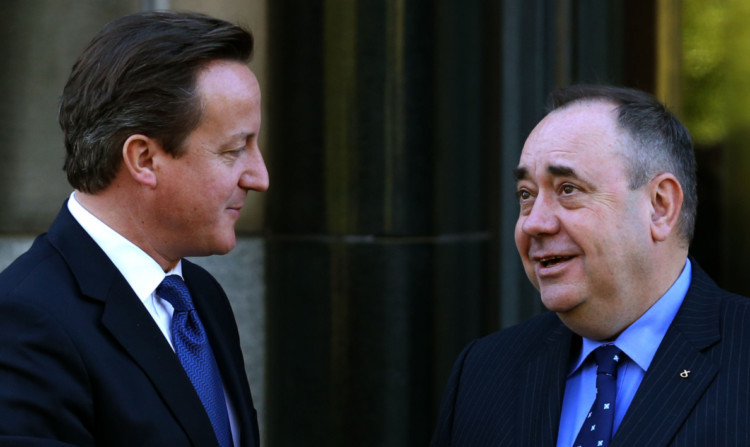Anything uttered by politicians in the heat of the independence debate “should be treated with caution”, Scotland’s financial industry body has said.
Scottish Financial Enterprise said the Scottish Government’s White Paper on independence is policy driven and showcases no downsides to the break up of the UK so “cannot, therefore, be seen as a balanced or reliable guide to the future after a ‘yes’ vote.”
In a briefing note on September’s referendum, the body added that the UK’s analysis papers should be treated with “a degree of caution” but adds they are “more detailed and factual than the papers produced by the Scottish Government”.
It also urged businesses to prepare for the possibility of an independent Scotland setting up its own currency after being denied the chance to use the pound as part of a sterling zone with the rest of the UK.
The briefing note said: “The Scottish Government and the UK Government are both parti pris and what they say should be treated with caution for business planning purposes.
“A currency union between the rest of the UK and an independent Scotland has been ruled out by the UK authorities; it would be prudent to consider the creation of a new and separate currency as a real possibility. This will be a major undertaking.”
The financial services industry in Scotland contributes around £7 billion to the Scottish economy and employs around 100,000 people directly and a further 100,000 indirectly. There are significant presences in Dundee, Perth and Stirling.
The note also says the Scottish Government’s planned Independence Day of March 24 2016 “looks unlikely” because of the length of time it would take to negotiate entry to the EU and disentanglement from the rest of the UK.
However, a letter sent to the Financial Times and signed by, among others, Sir George Mathewson, former chief executive and chairman of Royal Bank of Scotland, and Jim Spowart, founder of Standard Life Bank, said a yes vote could lead to positive developments for the sector.
The letter said: “Any truly objective analysis of what the referendum means for business requires a more thoughtful consideration of the UK’s current trajectory, and the opportunities for protecting and growing leading industries with significant potential.
“There are certainly opportunities to attract more jobs and investment to Scotland with the powers of independence and significant opportunities in an independent Scotland for financial services.”
Opposition camps in the independence debate clashed over the interventions.
Scottish Finance Secretary John Swinney said: “The reality is Scotland is a wealthy country, with a successful financial services industry, which is more than capable of thriving under any constitutional position a position recently recognised by the chief executive of SFE.”
Better Together leader Alistair Darling said: “The SNP’s White Paper is now so discredited that it isn’t worth the rather expensive paper that it is written on. SFE is right to say that it is basically a political manifesto.”
